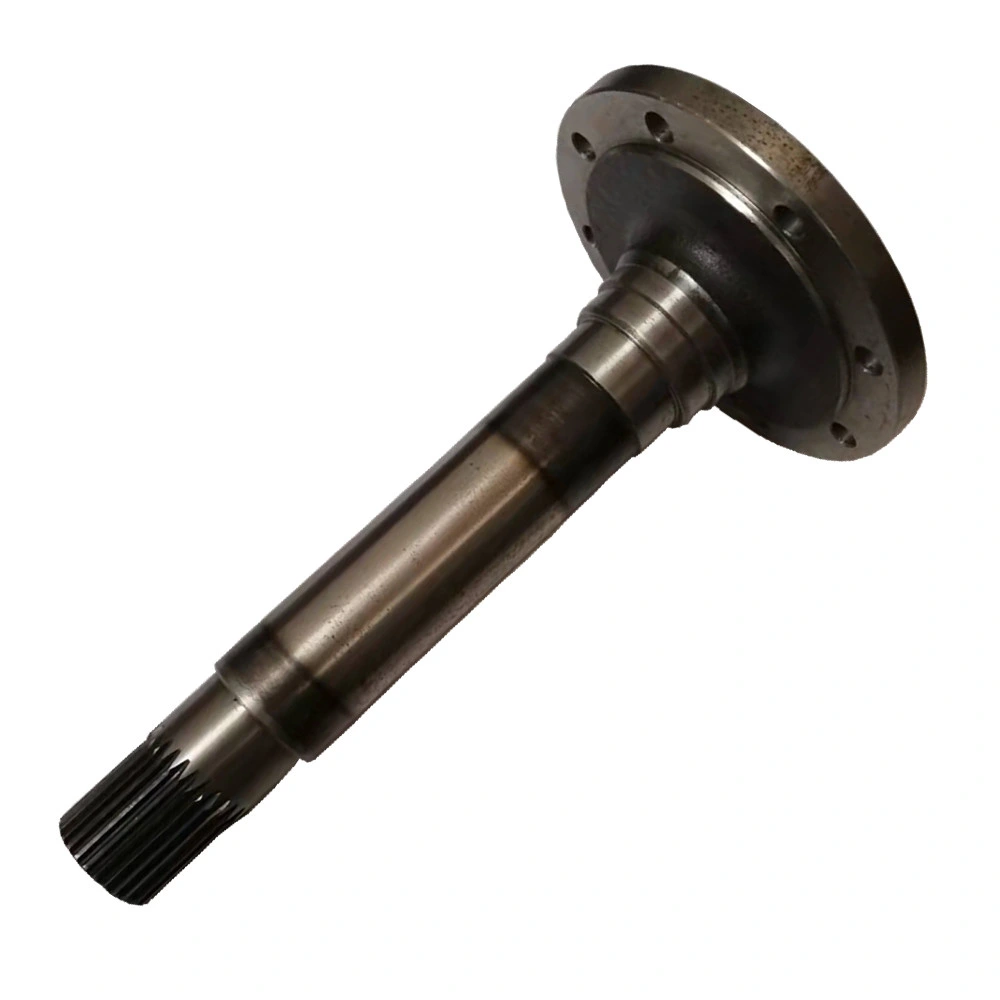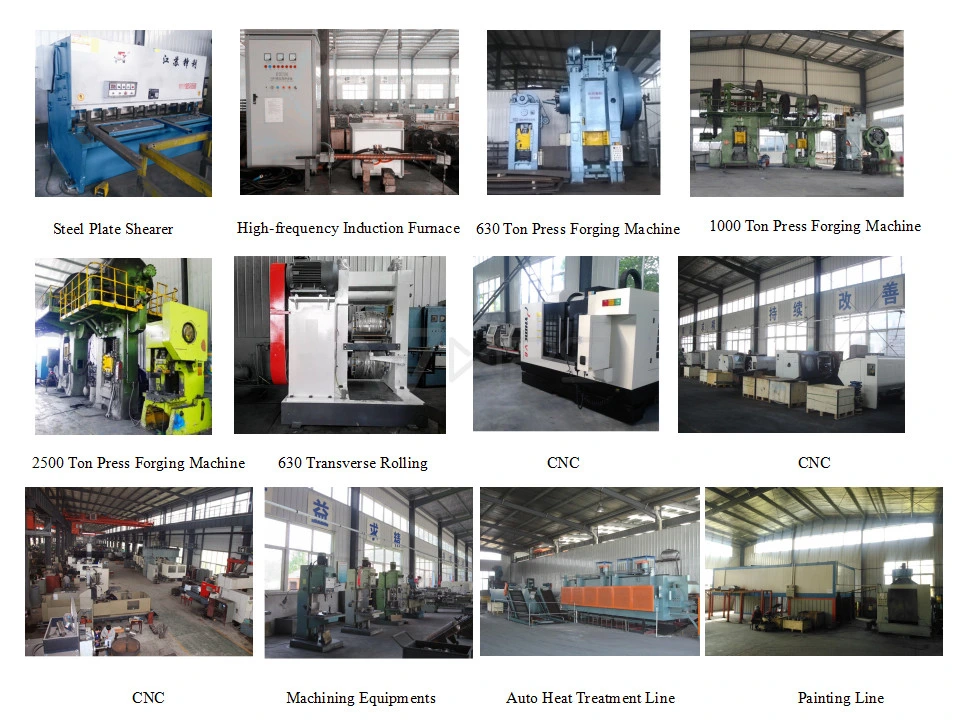Understanding the Intricacies of Locomotive Axle Spindle
1. Introduction to Locomotive Axle Spindle
The locomotive axle spindle is a critical component in the railway industry, playing an essential role in the dynamics of train movement. This component ensures the proper functioning and stability of the locomotive, making it indispensable for safe and efficient railway operations.
2. Historical Evolution of Axle Spindles
Tracing back to the early days of rail transport, axle spindles have undergone significant transformations. Initially crafted from basic materials, modern spindles now incorporate advanced alloys and engineering techniques. These advancements have drastically improved their durability and performance.
3. Key Materials Used in Axle Spindle Manufacturing
The materials selected for axle spindle production are pivotal to their performance. High-strength steels, often alloyed with elements like chromium and molybdenum, provide the necessary toughness and resistance to wear and fatigue.
4. Engineering Standards and Specifications
Axle spindles must adhere to stringent engineering standards to ensure their reliability. These standards dictate the dimensions, material properties, and performance criteria that spindles must meet, ensuring their compatibility with various locomotive designs.
5. The Role of Metallurgy in Axle Spindle Performance
Metallurgical expertise is crucial in the production of axle spindles. The microstructure of the metal, influenced by processes like heat treatment and forging, determines the spindle’s mechanical properties, such as tensile strength and impact resistance.
6. Modern Manufacturing Processes
Contemporary manufacturing of axle spindles employs state-of-the-art techniques. Computer Numerical Control (CNC) machines and automated assembly lines ensure precision and consistency in production, significantly reducing the margin for error.
7. Design Considerations for Optimal Performance
Designing an axle spindle involves a careful balance of various factors. Engineers must account for the load-bearing requirements, rotational speeds, and environmental conditions to create a spindle that performs efficiently under all operating scenarios.
8. Fatigue and Stress Analysis
Fatigue and stress analysis are integral to the design process. By simulating the operational stresses and analyzing the results, engineers can predict potential failure points and enhance the spindle’s design to mitigate risks.
9. Importance of Surface Treatment
Surface treatments like carburizing or nitriding can significantly extend the life of an axle spindle. These processes enhance the surface hardness, improving wear resistance and reducing the likelihood of surface-related failures.
10. Balancing Load and Speed
The balance between load and speed is crucial in axle spindle performance. Overloading or operating at excessive speeds can induce undue stress, leading to premature wear or catastrophic failure. Proper design and material selection help manage these factors.
11. Inspection and Quality Control
Rigorous inspection and quality control protocols are essential in axle spindle manufacturing. Non-destructive testing methods, such as ultrasonic and magnetic particle inspection, ensure that each spindle meets the required standards before deployment.
12. Common Failure Modes
Understanding common failure modes, such as fatigue cracks, corrosion, and wear, is vital for improving axle spindle reliability. By studying these failures, engineers can develop better materials and designs to prevent future occurrences.
13. Lubrication and Maintenance Practices
Proper lubrication and maintenance are crucial for the longevity of axle spindles. Regular inspections and the use of high-quality lubricants can prevent excessive wear and detect potential issues before they lead to failure.
14. Innovations in Axle Spindle Technology
The railway industry continues to innovate, incorporating new technologies into axle spindle design. Advanced materials, improved manufacturing techniques, and real-time monitoring systems are just a few of the innovations enhancing spindle performance.
15. Environmental Considerations
Environmental factors such as temperature, humidity, and exposure to corrosive substances must be considered in axle spindle design. Materials and coatings that resist these conditions are crucial for maintaining spindle integrity over time.
16. Case Studies of Axle Spindle Failures
Examining real-world case studies of axle spindle failures provides valuable insights into common issues and their causes. These studies help engineers develop more robust designs and preventative measures for future applications.
17. Comparative Analysis of Axle Spindle Materials
A comparative analysis of different materials used in axle spindle manufacturing can highlight their respective advantages and disadvantages. This analysis guides material selection based on specific performance requirements and environmental conditions.
18. Impact of Axle Spindle Design on Train Dynamics
The design of the axle spindle directly affects the dynamics of train movement. Properly designed spindles ensure smooth operation, stability, and safety, minimizing the risk of derailments and other operational hazards.
19. Role of Computational Simulation
Computational simulations play a significant role in axle spindle design. These simulations allow engineers to model various scenarios and stress conditions, optimizing the spindle design before physical prototypes are manufactured.
20. Integration with Overall Locomotive Design
The axle spindle is one component of a complex system. Integrating its design with the overall locomotive architecture ensures compatibility and optimal performance, contributing to the efficient and safe operation of the entire vehicle.
21. Future Trends in Axle Spindle Technology
Future trends in axle spindle technology may include the use of composite materials, advanced coatings, and smart monitoring systems. These innovations aim to enhance performance, reduce maintenance requirements, and extend the lifespan of axle spindles.
22. Economic Impact of Axle Spindle Failures
The economic impact of axle spindle failures can be substantial, leading to costly repairs, downtime, and even accidents. Investing in high-quality, reliable spindles can mitigate these risks and provide long-term cost savings.
23. Customization and Special Applications
Customization of axle spindles for special applications is increasingly common. Whether for unique load conditions or specific environmental challenges, tailored spindles can provide optimized performance in diverse scenarios.
24. Collaborative Efforts in Research and Development
Collaboration between manufacturers, researchers, and railway operators drives innovation in axle spindle technology. Joint efforts in research and development lead to breakthroughs that enhance performance and reliability.
25. Conclusion: The Future of Locomotive Axle Spindles
As we look to the future, the evolution of locomotive axle spindles promises continued advancements. With ongoing research and technological innovations, the industry is set to achieve even greater levels of performance, safety, and efficiency.

About Our Company
Our company is a leading player in China’s axle market. Our products include axle spindles, beam axles, trans axles, axle surgeons, live axles, straight axles, torsion axles, axle shafts, drop axles, and more. We boast a comprehensive array of fully automated CNC production equipment, totaling 300 sets, as well as fully automated assembly equipment.
We pride ourselves on offering premium quality products at competitive prices, complemented by exceptional service. Our clients are welcome to provide drawings or samples for customization.

Author: Czh
